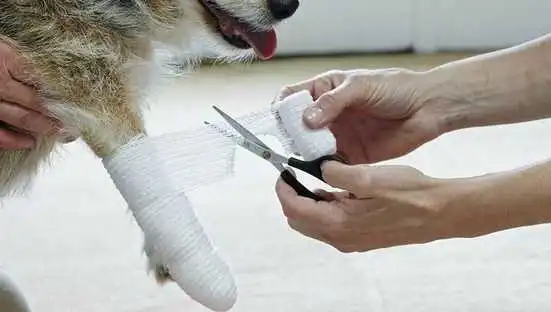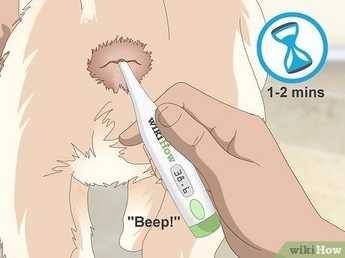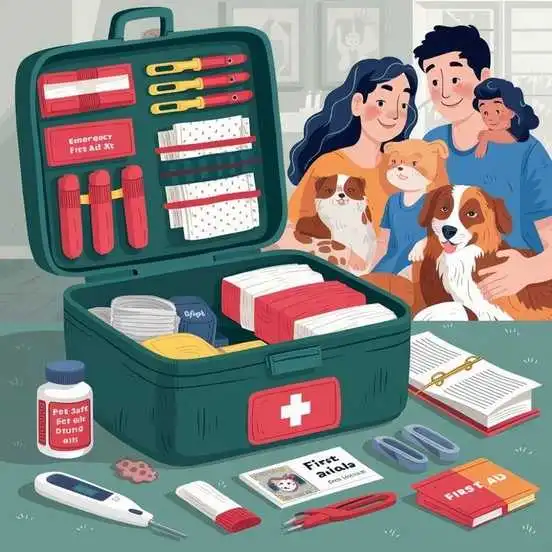An emergency can happen to your pet at any time, and knowing pet first aid responses can be a lifeline. While it’s not a replacement for professional veterinary care, first aid can help you stabilize your pet and potentially save their life until you can get them to a vet. This guide covers the essentials, from building a pet first aid kit to handling common emergencies.
Pet First Aid Essentials
A well-stocked pet first aid kit is your first line of defense. Keep one at home, and ensure it includes:
- Wound Care Supplies: Gauze pads for cleaning, adhesive tape for securing, and pet-safe antiseptic wipes or spray for disinfecting and disposable gloves for hygiene.
- Essential Tools: Tweezers for removing splinters or ticks, and scissors for cutting bandages.
- Monitoring Supplies: A digital rectal thermometer for monitoring temperature, a lubricant (for inserting a digital rectal thermometer).
- Emergency Contact: A list containing the phone numbers of your vet and the nearest emergency animal hospital.
Store everything in a waterproof container and check it regularly to replace expired items.

How to Monitor Your Pet’s Vital Signs
Knowing your pet’s normal vital signs helps you quickly identify any potential problems. Practice checking them when your pet is calm so you’re confident in an emergency. Here are the steps to follow:
- Heart Rate (Pulse): For dogs, place your hand on their chest or feel the femoral artery on the inside of their thigh. A normal rate is 70-120 beats per minute. For cats, feel the pulse on the inside of their thigh. A normal rate is 140-220 beats per minute.
- Respiratory Rate (Breathing): Count the number of breaths in 15 seconds while your pet is resting and multiply by four. Dogs typically have a normal breathing rate of 10-30 breaths per minute, while cats have a rate of 20-40 breaths per minute.
- Temperature: To take a dog or cat’s temperature, first, apply a water-soluble lubricant to the tip of a digital rectal thermometer. With a helper gently holding your pet still, lift their tail to expose the anus. Gently insert the lubricated thermometer about one inch into the rectum, holding it against the rectal wall. Wait for the thermometer to beep, then remove it and read the temperature. The normal temperature for both dogs and cats is 100-102.5°F (37.7-39.1°C).
- Capillary Refill Time (CRT): Measures blood flow. To perform it, gently press on your pet’s gums until they turn white. Release the pressure and count how long it takes for the color to return to its normal pink. This should take 1-2 seconds. A longer refill time can indicate poor circulation and a serious underlying condition, such as dehydration, anemia, or shock.

Handling Common Pet Emergencies
Quick, calm action is crucial during an emergency. Here is what to do:
- Cuts and Bleeding: Apply gentle, steady pressure to the wound with a clean cloth or gauze. If the bleeding doesn’t stop within 10 minutes or the wound is deep, visit a veterinarian immediately.
- Choking: If your pet is pawing at their mouth or gagging, carefully try to remove the object. If that fails, perform a modified Heimlich maneuver by applying quick, upward pressure to their abdomen.
- Poisoning: If your pet has ingested something toxic, contact your veterinarian or Animal Poison Control immediately. Do not induce vomiting unless specifically instructed to.
- Heatstroke: Symptoms include excessive panting, drooling, bright red gums, and lethargy. Move your pet to a cool, shaded area and apply cool (not ice-cold) water to their paws, belly, and outside of the ears. Go to the vet right away.
- Broken Bones: Keep your pet as still as possible to prevent further injury. You can use a blanket or a flat board as a makeshift stretcher to carefully transport them. Never attempt to realign a broken bone yourself.
- Seizures: Stay calm and move any objects that could injure your pet. Do not try to restrain them. Time the seizure. If it lasts longer than 5 minutes, seek emergency veterinary help immediately.
When to Seek Immediate Veterinary Care
Pet first aid is a bridge to professional treatment. You should always contact your vet or the nearest emergency clinic for guidance. Go to the vet immediately if your pet is experiencing: Uncontrollable bleeding, difficulty breathing, or unconsciousness.

Conclusion
Being prepared with basic pet first aid knowledge and a well-stocked kit can make a life-saving difference for your beloved pet.





